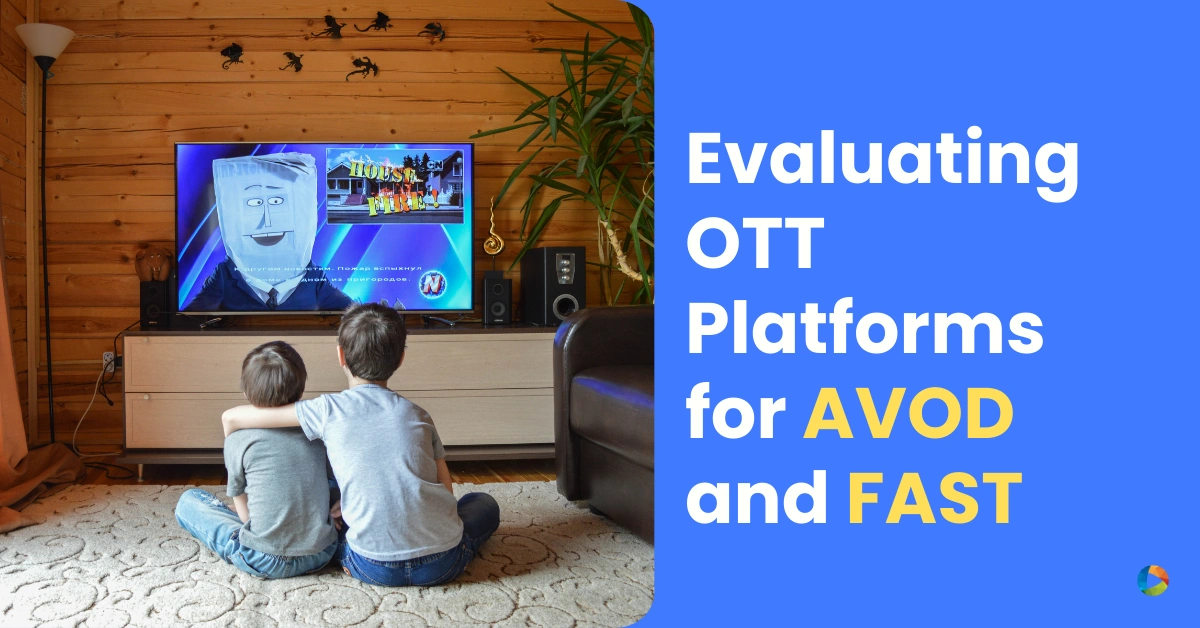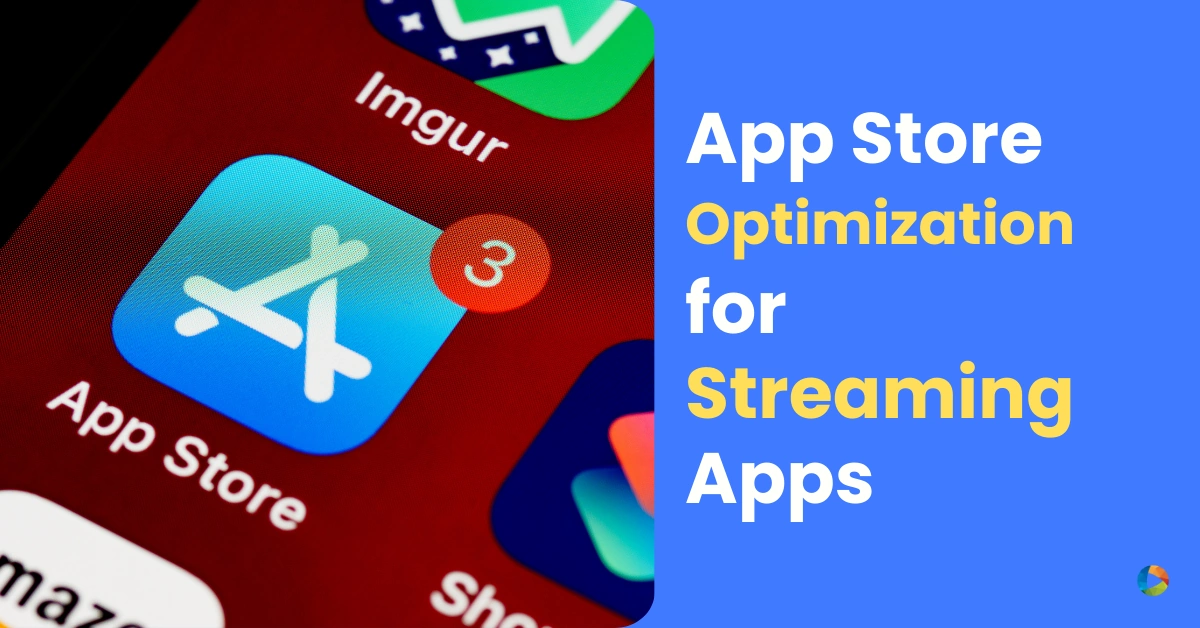Evaluating OTT Platforms for AVOD and FAST: Key Features to Look For
Last Updated on May 27, 2025 by Anjana Devi
As an OTT platform owner looking to monetize through the AVOD model, choosing the right technology provider is a big decision.
The features and capabilities that your platform provider offers will play a huge role in how effectively you can generate revenue, keep your viewers engaged, and make the most of your advertising opportunities.
In this blog post, we’re going to walk you through the most important factors to consider when evaluating OTT platform providers for AVOD monetization. Let’s breakdown everything from the technical aspects like ad insertion and targeting to analytics that help you track and improve your ad performance.
By the end, you’ll have a clear understanding of what to look for in a platform provider so that you can maximize your ad revenue while delivering a great experience to your viewers.
Understanding the AVOD Model
The AVOD model is a way for your audience to access your content for free, while you generate revenue through advertisements. Instead of charging viewers a subscription fee, you offer them the option to watch ads that are strategically placed before, during, or after your videos.
In short, with AVOD, you’re not just giving away content—you’re strategically monetizing it with ads, ensuring that both you and your audience get value from the experience
By monetizing with ads, you can reach a broader audience, including those who prefer not to pay for subscriptions, while still monetizing your content effectively.
Importance of Choosing the Right OTT Platform Provider
Choosing the right OTT platform provider is critical because it directly affects your ability to successfully monetize your content with ads by delivering a high-quality user experience, and also scale your business effectively.
Let’s take a closer look at why it’s important to choose the right OTT platform provider.
1. Monetization Efficiency
The capabilities of your OTT platform provider determine how well you can implement and optimize your AVOD strategy
Its a no-brainer that features like ad insertion, targeting, and analytics are essential for maximizing your ad revenue and if your platform lacks robust support for these features, you might miss out on potential earnings or struggle to effectively reach your audience with relevant ads.
2. User Experience
A seamless and enjoyable viewing experience is key to retaining your audience – if your platform provider doesn’t offer reliable ad integration, your viewers could experience issues like buffering, poorly timed ads, or intrusive ad placements.
These frustrations can lead to higher bounce rates and lower viewer engagement, ultimately hurting your streaming service’s growth and revenue potential.
3. Scalability
As your streaming service grows, your needs will evolve – a strong OTT platform provider will offer scalable solutions that can adapt to your increasing audience size and changing content demands.
This includes supporting more complex ad setups, offering advanced targeting options, and providing the infrastructure needed to handle larger viewership without compromising performance. Without a reliable platform provider, scaling up your streaming business could be a nightmare
4. Compliance and Security
Ensuring that your platform meets industry standards for ad delivery, privacy, and security is crucial to launch your streaming service across the globe as many regions have different privacy policies.
The right OTT platform provider will have integration capabilities with consent management systems for compliance policies like GDPR and CCPA.
This not only safeguards your business but also builds trust with your audience and advertisers.
Now, knowing that your OTT platform’s capabilities is the backbone of your streaming service’s performance let’s find out how to find the right platform.
Evaluating OTT platforms – by Capability
When choosing your OTT platform provider for your AVOD streaming service, there are several essential capabilities you should be ensuring your platform provider has. Let us break down the features and see what questions you should be asking to see if they have the right capabilities
IMA and VAST Tags Support
IMA (Interactive Media Ads) and VAST (Video Ad Serving Template) are the industry standards for digital video advertising. They ensure compatibility between your streaming service and various ad servers, allowing you to serve ads from multiple sources without issues.
These ad tags are pieces of code that trigger ad requests from your ad server and show them to viewers while watching your content.
Make sure your OTT platform provider supports these standards, so that you can seamlessly integrate with different ad networks and technologies, giving you more flexibility and access to diverse revenue streams
What to ask?
Inquire about their support for the latest VAST standards, as these are critical for ensuring that ads are delivered correctly.
Direct Advertising capability
Direct ad capability refers to the ability of an OTT platform to support the uploading and management of ad content directly as video assets.
With direct ad capability, you can easily upload and manage ads that are specifically created for your platform. This could be content from brands you have relationships with or promotional material for your own shows, movies, or events.
By using direct ad uploads, you can negotiate directly with brands and advertisers, potentially securing better rates and more favorable terms than those offered through third-party ad networks. This direct approach can lead to higher revenue margins.
Additionally, promoting your own content through direct ads can help reduce marketing costs and increase viewer retention by encouraging users to explore more of your own content.
Ad Modes: Pre-Roll, Mid-Roll, and Post-Roll
Pre-roll ads play before the content starts, mid-roll ads are inserted during the content, and post-roll ads appear after the content ends. Each of these ad modes has its own advantages, with pre-rolls capturing attention immediately, mid-rolls benefiting from already-engaged viewers, and post-rolls wrapping up the content experience.
Your platform provider should allow for the flexible placement of ads depending on your content and audience behavior For instance, mid-roll ads might perform better in longer content, while pre-rolls are effective for shorter clips
The ability to customize ad modes is crucial for optimizing ad revenue
What to ask?
Do you support pre-roll, mid-roll, and post-roll ads?
Do you provide analytics on how different ad modes perform across various content types?
Can we create different ad strategies for different types of content (e.g., movies vs. short clips)?
Do you support ad pods (multiple ads in one break) within mid-rolls?
How consistent is ad placement across different platforms (web, mobile, smart TVs)?
Can ad modes be customized for different device types or screen sizes?
Can we manage ad inventory for each ad mode separately?
Do you support ad-free viewing options for premium subscribers?
Ad Sequencing for Optimal Viewer Experience
Ad sequencing refers to controlling how often ads appear during content playback. A platform that offers customizable ad sequencing helps you avoid overwhelming your audience with too many ads, striking the right balance between ad frequency and viewer retention.
Overloading your viewers with ads can lead to frustration and higher abandonment rates
Evaluating how well your platform allows you to manage ad frequency can help maintain viewer satisfaction while still driving ad revenue
What to ask?
Can we set rules for ad placement based on content duration?
Can we implement frequency capping for different ad modes?
Advanced Targeting Options
Targeting ads based on the content’s keywords or specific categories ensures relevance, increasing the likelihood of viewer engagement with the ad. Your user’s engagement with ads translates to more revenue.
Geo-targeting allows you to serve ads based on the viewer’s location, making the ad experience more relevant and personalized, which can significantly boost ad performance.
Different devices (smartphones, tablets, TVs) have varying ad formats and viewer behaviors. Only a platform that supports device-specific targeting helps you optimize ad delivery for each device type, improving overall ad effectiveness
What to ask?
How much control do we have over setting and adjusting targeting parameters?
Can we integrate with multiple ad networks or exchanges to leverage advanced targeting options?
What kind of analytics do you provide for targeted ad campaigns?
How do you ensure that targeted ads comply with privacy regulations and ethical standards?
Client-Side Ad Insertion (CSAI) and Server-Side Ad Insertion (SSAI)
CSAI involves inserting ads into the content at the client’s side (viewer’s device), while SSAI stitches ads directly into the content stream on the server side before delivery.
How does this affect user experience? SSAI often provides a smoother ad experience and better ad-blocker resistance, while CSAI offers more control over ad delivery and interaction.
The right approach depends on your platform’s goals – SSAI can reduce buffering and improve viewer experience, but CSAI allows for more interactive ads and detailed reporting.
Dynamic Macro Substitutions in Ad Tags
Dynamic macro substitutions in ad tags are a powerful tool that allows you to personalize and optimize ad delivery on your OTT platform.
Macros are placeholders within an ad tag that get replaced with real-time data when the ad is requested by the player. This dynamic substitution enhances the relevance of ads by tailoring them to specific conditions like location, device type, content category and more
Ensure your OTT platform provider supports these dynamic substitutions to improve the relevance and effectiveness of your ads
This can significantly enhance the performance of your ad campaigns and increase CPMs
Here are some commonly asked macros by ad partners. Just check if your OTT platform provider provides these details
- Timestamp
- Video keywords
- Video category
- Video duration
- User IP
- User location (latitude and longitude)
- Device ad ID
- User agent
- Unique Video ID
- Video Title
- App bundle details
- App name
- App Store URL
And if you have a consent management system in place, you may also be able to share user consent parameters such as us_privacy, gdpr, gdpr_consent, dnt, coppa and more.
Analytics for Ad Monetization
To ad-monetize your streaming service effectively you need reports that tell you what works and what doesn’t. This requires detailed analytics.
Look for a platform that offers clear insights on metrics like ad impressions, completion rates, and click-through rates.
Only a platform with robust analytics capabilities allows you to continually optimize your ad placements, targeting, and overall strategy, helping you maximize revenue while minimizing viewer drop-off.
Livestream Ad SCTE Integration
SCTE Integration is a crucial feature for your success if you are panning to offer live streaming with ads.
SCTE-35 is the commonly used standard which is used to signal ad insertion points during live streams. The SCTE-35 markers are embedded into the video stream at specific points where you plan to insert your ads.
These markers are essentially time-based cues that tell your ad-partner when and where to place an ad during a live broadcast.
With SCTE-35 integration, the ad-network can make real-time decisions about which ads to insert based on the current audience, geographic location, or other dynamic factors based on the macros passed.
This real-time decision-making is critical during live channels, where the audience might vary widely depending on the time of day, device, location, and other external factors.
Conclusion
Starting an AVOD streaming service requires careful consideration of the capabilities offered by your OTT platform provider.
From ensuring compatibility with IMA and VAST standards to supporting advanced ad targeting and seamless ad integration during live streams, the right platform can significantly impact your revenue potential and viewer experience.
As you evaluate your providers, focus on those offering support for ad modes, dynamic macro substitutions, and insightful analytics.
These features will not only help you maximize your ad revenue but also help you to engage and retain your audience.
By choosing a platform that aligns with your specific AVOD needs, you position your streaming service for success in an increasingly competitive market.
Only with the right tools, you can optimize ad delivery, enhance viewer satisfaction, and ultimately, achieve your monetization goals, so evaluate your providers before choosing the one.
Looking to launch your streaming app?








